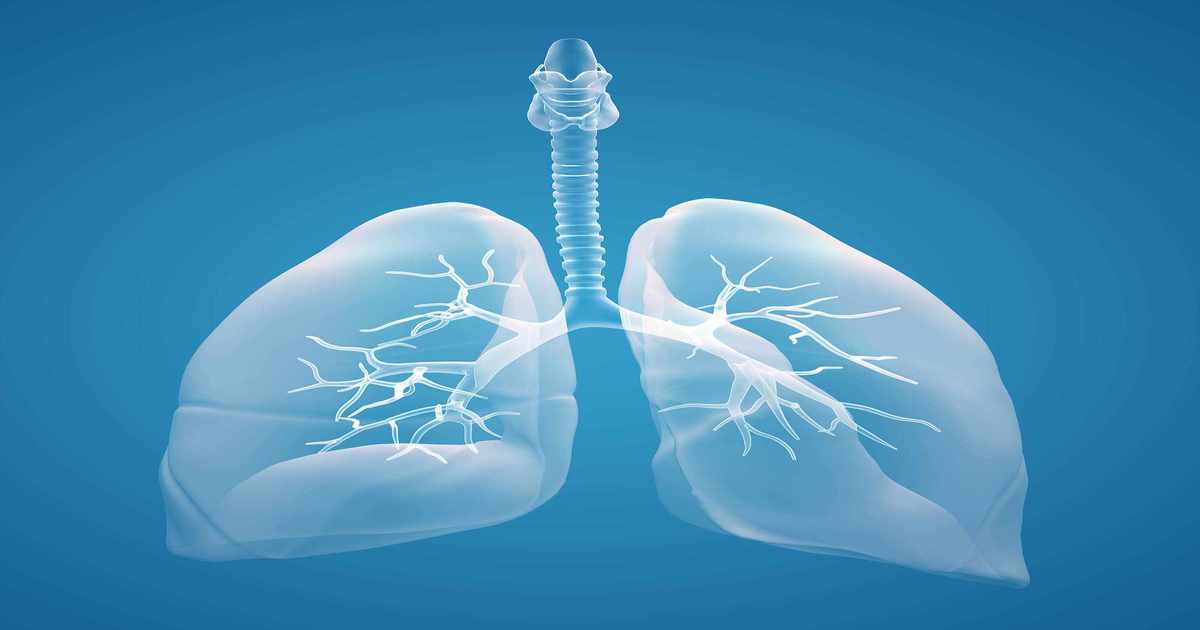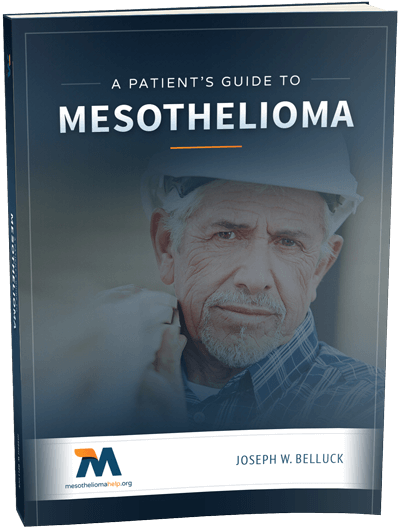Category: Featured News

Support Mesothelioma Caregivers During National Family Caregivers Month
It is hard to understand the challenges caregivers face every day, unless you have been a caregiver yourself. While pleural mesothelioma patients may have the spotlight turned on them this month during National Lung Cancer Awareness Month, now is also a time to shine a light on caregivers during National Family Caregivers Month.
Patients diagnosed with mesothelioma face a long, demanding battle involving countless doctors’ appointments, extensive tests, chemotherapy treatments and radiation therapy. Managing the illness and all the appointments, on top of taking care of day-to-day living needs, takes the help of a dedicated caregiver. Caregivers, typically spouses or other family members, provide nearly constant care for mesothelioma patients, often while trying to care for other family members.
This year, the Caregiver Action Network (CAN) recognizes that caregiving can be a 24-hours a day/7-days a week job and has designated the theme for National Family Caregivers Month as “Caregiving Around the Clock.”
According to CAN, more than 65 million family caregivers, or 29% of the U.S. population, “provide care for a chronically ill, disabled, or aged family member or friend during any given year.” Although CAN notes that the average amount of care time is 20 hours per week, those hours are all day long: morning, during the workday, evening, late at night and in the middle of the night – every day.
For mesothelioma patients, the caregivers are vital for helping them follow their medical, dietary and exercise regimens. Caregivers are called upon to deal with the myriad medical appointments, medical bills, updates to other family members and friends as well as ensuring that the household runs efficiently.
President Trump declared in this year’s presidential proclamation: “Caregivers must often be available around the clock, which can require them to forgo or postpone priorities for their own lives. Through sacrificial love, caregivers endure emotional, physical, and financial strain for the sake of another.”
We here at MesotheliomaHelp join President Trump and all Americans in honoring “those whose extraordinary selflessness provides others with independence and comfort.” We offer our appreciation to all the caregivers supporting a loved one as they fight mesothelioma.
Visit the Caregiver Action Network website for caregiving support resources and more information.

Turning a Spotlight on Mesothelioma During Lung Cancer Awareness Month
For many people, November means apple cider, pumpkin pie, and Thanksgiving. In the health and medical fields, November is Lung Cancer Awareness Month, which emphasizes education and awareness of all things about lung cancer and other cancers affecting the respiratory system – such as mesothelioma.
This year, help out by making November a month to educate others about mesothelioma and lung cancer by taking part in Lung Cancer Awareness Month. Teaching the facts about mesothelioma, its symptoms, and its causes can help patients, family members, and friends better understand the disease and help advocate for the community.
Pleural mesothelioma is caused by inhalation or ingestion of airborne asbestos fibers. The fibers then become lodged in the lining of the chest, where, over the years, they begin to irritate the tissue leading to cancer. Not everyone exposed to asbestos will develop mesothelioma, but those who do often are not diagnosed until decades after exposure. The treatment protocol for pleural mesothelioma is similar to that of lung cancer.
People who live with pleural mesothelioma, or who care for someone with the cancer, know that educating the public about the struggles facing rare disease sufferers often takes a focused effort from organizations, the government, the medical community and many volunteers.
Early Detection of Mesothelioma is Important
With a vision of “a world where no one dies of lung cancer,” LUNGevity is 100% focused on increasing and improving lung cancer survivorship. In addition, the 501(c)(3) charity focuses on building and sustaining a community for all those affected by lung cancer and through “accelerating research into early detection and more effective treatments” the organization aims to make an immediate impact on quality of life and survivorship in lung cancer patients.
The key to increased life expectancy when battling mesothelioma is early detection. When treating mesothelioma patients, the best outcome is achieved with early detection of the disease by increasing treatment options and improving the patients’ quality of life while battling the cancer.
“LUNGevity believes strongly that everyone can drive progress and change for people affected by the disease, whether through research funding, mentoring a fellow lung cancer patient, or organizing and participating in events and activities to raise funds and awareness,” as stated in the 2016 press release kicking off the awareness month.
Know What Questions to Ask Your Mesothelioma Doctor
According to the American Lung Association, “The diagnosis of mesothelioma is very serious and may be overwhelming and affects all aspects of life in a profound way.” The ALA recommends being actively prepared for each healthcare visit by writing down questions to ensure you get everything you need in the short visit, and that your family and caregivers are thoroughly informed about your wants and needs.
- What is the goal of the treatment you are proposing? Is the intent to cure me from the disease or manage its symptoms?
- What are the side effects of the proposed treatment and how will they affect my quality of life?
- Am I a candidate for any clinical trial?
- What are my options for palliative care to address management of my shortness of breath and pain?
- Can you help me and my family make decisions about how I will be treated at the end of my life?
Lung cancer is the leading cause of cancer death in men and women with an estimated 222,500 new diagnoses and 155,870 deaths in 2017, according to the National Cancer Institute. Nearly 3,000 Americans are diagnosed with mesothelioma each year.
Visit ‘Faces of Mesothelioma’ to read stories from mesothelioma survivors and their family members about how mesothelioma has impacted their lives.

FDA Flags Some Mesothelioma Drugs On Quarterly Adverse Events Report
Mesothelioma patients have limited treatment options, and often times these come with some known side effects. While these side effects, such as pain, nausea and fatigue, can be treated by your medical team, there are some “adverse affects” that may require the U.S. Food and Drug Administration to take a second look at the drug. In the FDA’s latest quarterly watch list, it has identified seven cancer treatments, three of which are used in mesothelioma care, as having possible serious risks.
In “Potential Signals of Serious Risks/New Safety Information Identified by the FDA Adverse Event Reporting System (FAERS): April – June 2017” issued Oct. 6, the FDA listed 19 drugs from its FDA’s Adverse Event Reporting System (FAERS). FAERS, according to the FDA, is a database that contains adverse event reports, medication error reports and product quality complaints resulting in adverse events that are submitted to the FDA. It is used as a tool by the agency to look for new safety concerns that might be related to a marketed product.
Although the FDA issues these reports, the agency warns that the information does not give the complete story. The data, according to the FDA, is not an indicator of the safety profile of the drug or biologic, and the report does not establish “causation.” In fact, the FDA reports that “there is no certainty that a suspected drug caused the reaction.”
In the report, however, the FDA does indicate action it will take when looking into the data that caused a drug to end up on the report.
Identified Drugs and Related Mesothelioma Information
- Keytruda (pembrolizumab): Complications of allogeneic hematopoietic stem cell transplantation (FDA is evaluating the need for regulatory action), and Stevens-Johnson syndrome and toxic epidermal necrolysis (the “Warning and Precautions” section of the labeling for Keytruda was updated to include Stevens-Johnson syndrome and toxic epidermal necrolysis.)
- Opdivo (nivolumab): Complications of allogeneic hematopoietic stem cell transplantation (FDA is evaluating the need for regulatory action.)
- Taxotere (docetaxel): Docetaxel and neutropenic enterocolitis (FDA is evaluating the need for regulatory action.)
Both Keytruda and Opdivo work by blocking the PD-L1 protein and activating the immune system, leading it to attack and kill cancer cells. These drugs are immunotherapy treatments and involve allogeneic hematopoietic stem cell transplantation, which translates to donor blood stem cell transplants. Opdivo clinical trials are ongoing for mesothelioma patients and they have shown “significant benefits” for patients.
Keytruda is approved for use in lung cancer and melanoma, and in an unprecedented move, in May the FDA approved the use of Keytruda for any cancer having a biomarker referred to as microsatellite instability-high (MSI-H) or mismatch repair deficient (dMMR), regardless of cancer type.
In the approval of Keytruda, the FDA noted potential complications or death related to allogeneic hematopoietic stem cell transplantation after using Keytruda. Stevens-Johnson syndrome is a rare, serious and potentially deadly disorder of the skin and mucous membranes that leads to a painful red or purplish rash that spreads and blisters.
Keytruda has brought hope to the mesothelioma community with mesothelioma warriors showing excellent results from use of the drug. Mavis Nye of England, an eight-year mesothelioma survivor, can now claim remission from her pleural mesothelioma after participating in a two-year clinical trial of Keytruda.
Docetaxel is a chemotherapy drug often combined with gemcitabine as a second-line treatment of lung cancer and mesothelioma. Neutropenic enterocolitisis, as triggered with docetaxel, is a rare yet severe complication of chemotherapy signaled by extreme abdominal pain. If not treated properly, it can lead to death.
This report can be considered as another source of information when determining to use a drug for treatment, and is not an indication that you should halt treatment or use of a drug. Any questions you may have should be directed to your doctor.
Mesothelioma, an asbestos-caused cancer, is both incurable and deadly. Close to 3,000 Americans are diagnosed with the disease each year.
Talk with your doctor to find out which treatment is best for you.

Determining the Appropriate Time For the Flu Shot in Mesothelioma Patients
For many, fall brings with it the vibrant color of the leaves, pumpkins, cinnamon and the anticipation of the holidays. It also brings with it flu and cold season. Thanks to the widespread availability of the flu shot, however, keeping the flu at bay is easier. Although for mesothelioma patients, that may not be the case.
According to an article from MD Anderson Cancer Center, home to the Mesothelioma Program that cares for more patients with mesothelioma than almost any other center in the U.S., when it comes time to get the flu shot, cancer patients should time it around their chemotherapy treatments. Specifically, the author suggests getting the flu shot two weeks prior to the first chemotherapy treatment or between chemo cycles, if treatment has already begun. Mesothelioma and cancer patients should not take the flu mist form of the flu since it contains an active virus.
“Your family members should also get the flu virus injection instead of the nasal mist,” says Shobha Pai, a physician assistant at MD Anderson in The Woodlands. “By protecting themselves from the flu, they’re also protecting you from getting it from them.”
Mesothelioma patients may still be susceptible to developing the flu due to their weakened immune system caused by the cancer and the chemotherapy treatments. The Centers for Disease Control and Prevention reports in “Frequently Asked Flu Questions 2017-2018 Influenza Season” that even after vaccination it is still possible to get sick with the flu. “Flu vaccination is not a perfect tool, but it is the best way to protect against flu infection,” the CDC notes.
The CDC recommends that people get a flu vaccine by the end of October, if possible. However, getting vaccinated later can still be beneficial.
Pleural mesothelioma is a rare, aggressive form of cancer primarily caused by exposure to airborne asbestos fibers, that affects the lining of the lungs. Mesothelioma symptoms include a persistent cough, and over half of the pleural mesothelioma patients suffer pain in the lower, back and sides of the chest. If a patient gets the flu, these symptoms will worsen and the patient may need hospitalization.
It is especially important for cancer patients to stay away from sick people and to wash their hands to reduce the spread of germs. Mesothelioma patients who develop the flu should contact their oncologist immediately to determine if they need medical care.
Close to 3,000 Americans are diagnosed with mesothelioma each year. There is no known cure for the disease.

Creative Scientists May Eventually Find a Simple Way To Monitor Mesothelioma Symptoms
MesotheliomaHelp has covered breakthrough technology that may seem more appropriate for science fiction articles, such as the Qualcomm Tricorder XPRIZE competition to design a handheld device to help diagnose health conditions, than for mesothelioma care. In another seemingly science fiction approach to medical care, scientists report a tattoo with “smart” ink could help monitor chronic health conditions.
Scientists from Harvard and MIT partnered in a “proof of concept” experiment to determine whether biosensitive inks could become a reliable standard as a biomedical monitoring device. The team wanted to find a way to check blood glucose levels, for example, without requiring a skin prick or wires, sensors and batteries, that are needed with today’s devices.
With mesothelioma, an asbestos-caused cancer primarily striking older patients, one issue with managing the disease is the co- conditions from which many of the patients also suffer. According to data, about three out of four people with mesothelioma are older than 65 years, and nearly half them may have medical problems, such as heart disease and diabetes, that also need to be monitored.
In seeking to find the “next generation after wearables,” the researchers determined they could use biosensors directly on the skin. Dubbing the project “Dermal Abyss,” the researchers turned to pig skin for their initial testing. Tattooing the inks onto segments of the skin, the researchers watched as the colors of the ink changed based on biomarkers. In one case, a green ink changed to brown indicating increased levels of glucose. In another, they shined a blue light on a green ink that intensified in color as sodium concentration increased indicating dehydration.
Mesothelioma patients undergoing chemotherapy and radiation are also vulnerable to infection, dehydration and exhaustion from the harsh drugs. Finding a way to more closely monitor these symptoms could help get the patients back on their feet more quickly. Nearly 3,000 Americans are diagnosed with mesothelioma each year.
The researchers point out that this tattoo is still in the very early stages and “The purpose of the work is to light the imagination of biotechnologists and stimulate public support for such efforts,” said Nan Jiang, a postdoctoral fellow at Harvard Medical School and Brigham and Women’s Hospital.
“These questions of how technology impacts our lives must be considered as carefully as the design of the molecular sensors patients may someday carry embedded in their skin,” said Jiang.
Photo Credit: Harvard Medical School
Free Mesothelioma Patient & Treatment Guide
We’d like to offer you our in-depth guide, “A Patient’s Guide to Mesothelioma,” absolutely free of charge.
It contains a wealth of information and resources to help you better understand the condition, choose (and afford) appropriate treatment, and exercise your legal right to compensation.
Download Now